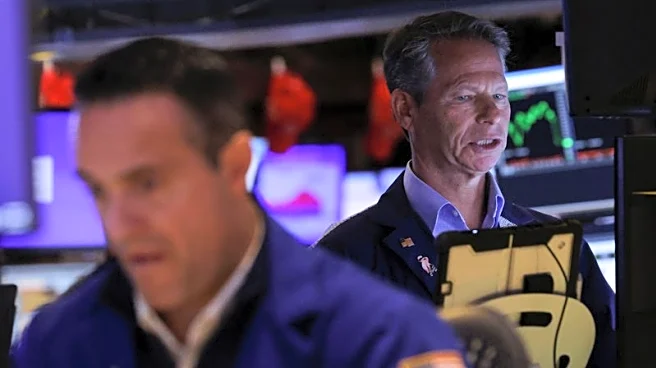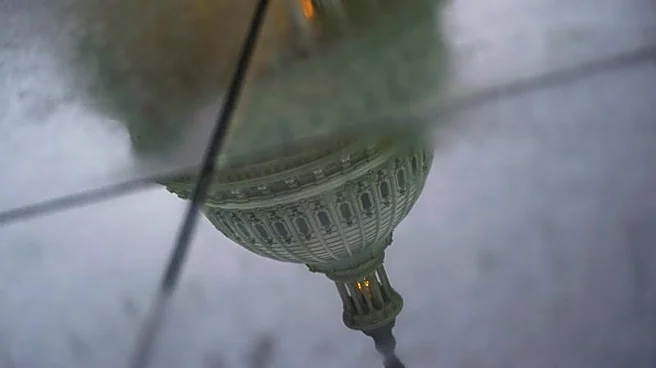What is the story about?
What's Happening?
The federal government shut down after lawmakers failed to agree on a short-term funding measure before the October 1 deadline. This shutdown has led to the cessation of all nonessential government functions, resulting in hundreds of thousands of federal workers being furloughed or working without pay. Essential services such as air traffic control and Social Security check distribution will continue. The Congressional Budget Office estimates that approximately 750,000 workers will be furloughed, costing the U.S. economy about $400 million each day. Historically, government shutdowns have been more disruptive in headlines than in economic impact, with investors often remaining indifferent. The government has shut down 21 times since 1976, with a median duration of four days since 1984. The S&P 500 has typically rebounded quickly after shutdowns, gaining 10.3% during the longest shutdown from December 2018 to January 2019.
Why It's Important?
The shutdown poses significant challenges to the U.S. economy, particularly affecting federal workers and those reliant on government services. The furloughs and layoffs could lead to economic instability, costing the economy millions daily. Despite this, historical data suggests that the stock market often recovers quickly post-shutdown, with the S&P 500 frequently rising in the aftermath. Investors may remain optimistic, anticipating a return to a bull market once the shutdown concludes. However, the lack of government data during the shutdown could leave the Federal Reserve 'flying blind,' potentially impacting monetary policy decisions.
What's Next?
As the shutdown continues, Congress may vote to retroactively pay furloughed and unpaid workers, as has been done in past shutdowns. The Federal Reserve will need to rely on private data and its own surveys to make informed decisions, including a potential interest rate cut later this month. Wall Street will likely monitor the situation closely, with investors looking forward to resuming normal market activities once the government is funded.
Beyond the Headlines
The shutdown highlights the ongoing political gridlock in Washington, which can have broader implications for public trust in government institutions. The repeated occurrence of shutdowns may lead to increased cynicism among investors and the public, potentially affecting long-term economic confidence. Additionally, the reliance on private data by the Federal Reserve during shutdowns raises questions about the transparency and reliability of economic policymaking.
AI Generated Content
Do you find this article useful?














